DJI Neo: The Most Versatile Drone
When you think about the best drone DJI has made, you might instantly think about the fastest drone, the one that can fly the longest, the one with the best camera, or maybe even the most expensive drone they make. But to me, I think the best drone is the one that is the most versatile and easiest to access for everyone. For this reason, I believe the DJI Neo is one of the best drones that DJI has made, for a huge list of reasons.
Why Neo Stands Out
I think the price makes it an easy entry to their lineup. The versatility of control methods allows it to cater to many different users. The design makes it okay to crash and bump into stuff without causing serious damage to the drone or others around you. It’s super small, so it’s really easy to bring with you on the go. The technology inside, which has been improved over the years, makes it all-around easy to get the hang of and actually have fun with.
Versatility of Control Methods
Of the points on that list, I really want to focus on the versatility of the DJI Neo here in this video because there are so many ways to control this drone. You can use a regular controller, the motion controller, your phone, the button on the drone, or even your voice.
This is a list of every single way that you can use the Neo, and I say the word “use” because in some of these modes, you aren’t even flying the drone – it’s using its onboard autonomy to fly itself. From this list, basically any type of person who wants to fly this drone is totally covered.
Control Options
If you don’t want to use your phone, cool, just fly with the button on the drone. Want more information and to see what the camera is streaming? Cool, use the Fly app on your phone. If you instead want to take manual control of the drone, you’ve got the option to use the controller that connects to your phone, a remote with a built-in screen, or you could throw on a set of goggles and fly faster with a first-person view.
Just as a visual, everything on the table here can be used to fly the DJI Neo, giving it such a wide variety of options and making it the first drone that’s compatible with this many input methods.
Button Control
I believe Neo is the first DJI drone that you can fly with just the push of a button located on the front of the drone itself. It’s accompanied by a small array of illuminated logos that show you which flight mode would be engaged from the long press of that button.
This is by far the lowest barrier to entry when it comes to flying Neo, as you don’t need anything except for the drone itself. All you need to do is turn the drone on, give it a second to boot up, and then select which flight mode you want to enable. As you cycle through, the drone will give you feedback from an onboard speaker: “Follow,” “Dronie,” “Circle,” “Rocket,” “Spotlight,” “Direction,” “Track,” “Follow.”
When you cycle to the flight mode you want, just long-press the button and it’ll give you an audible response about what flight mode and settings are engaged. It’ll slowly take off from your hand, fly out, and begin its shooting process.
Follow Mode Example
In this case, if we’re using the follow mode, it’ll fly out and begin following me and tracking me from the predetermined settings in the Fly app. When I’m finished with the flight, I just stand still for 3 seconds to let the drone know that I’m finished, walk over to it, and place my hand underneath it. The sensors on the bottom recognize that my hand is there, and it lands in my palm.
This flight mode is perfect for anyone who doesn’t want to deal with a cumbersome phone or remote that needs to be held and just wants the drone to follow them while they’re out doing their thing, whether they’re skiing or on their bike. It doesn’t matter – you don’t need a phone to actually control the drone. You can just use the button, allow it to take off, follow you, and now you don’t have to worry about holding something else to actually control the drone. It does all the work for you.
Phone Control with Fly App
Now personally, I prefer a little bit more control and insight over my drone when it’s out in space. I’d rather not just put it out there by itself by pressing a button and letting it go. So at the very least, I’d connect my phone to the drone over a Wi-Fi network so that I can see information through the Fly app.
This experience as a whole is very different from previous DJI drones, as for the past 5 years, you needed some type of controller to fly the drone. With the Neo, though, you can just use your phone with a direct Wi-Fi connection, ditching the need for any extra hardware.
What makes this different, though, is the portrait orientation. Whereas previous drones that had the same Wi-Fi connection capability, like the original Mavic Pro and the Spark, used a virtual stick overlay on the traditional horizontal app layout that made the experience feel very clunky.
Now within the Fly app, you can access all the automated flight modes while also having the basic manual controls that you would need. To give you a general rundown, your live feed and important information about the drone like battery life remaining, flight time remaining, and your connection strength are at the top of the screen.
Below this, there’s a drop-down menu that lets you choose from a list of different flight modes. Depending on what you choose, the bottom section of the screen changes to give you the appropriate controls. For example, with manual flight, you get a virtual stick setup that lets you move the drone in space. You can also use the arrows on the right side of the live view to pitch the camera up and down.
While this doesn’t give you the fastest speed possible from the drone, it still gives the option to move it into the position you want to snap a quick photo of something or maneuver the drone out of a tight area after a collision.
The automated flight modes, however, are as simple as just pressing the start button once you have your subject selected in the live view. You can still bring up the virtual sticks to push the drone around a little if you need to, but this experience really couldn’t be more simple. You just pop the drone up in the air, let it find the subject, press start, and let it do its thing.
Benefits of Using the Fly App
So the Fly app is a really good way to keep control over the Neo while it’s up in the air completing its automated flight missions, especially when it comes to the follow mode. You might be so far away from where you initially took off, it’s really good to just have your phone open as a reference to know if the drone is still there, if it’s still following you, how much battery life is remaining, and what’s the connection like between the drone and your phone.
There is so much information to know, and again, if you’ve got your drone following you and you’re not paying attention, it’s good to just have your phone to glance at for those just-in-case moments.
Voice Control
But the Fly app also has another cool trick up its sleeve: you can fly the DJI Neo entirely with your voice. Yes, this drone has voice control. Now personally, I don’t think it’s going to be all that much help, but it’s definitely cool, and I do want to demonstrate it here in this video.
From the Fly app, from the main screen here, if you tap on the settings in the bottom right corner and then go to the “More Settings” section, then “Control,” then “Voice Control Settings,” you can turn on voice control and then show all the different commands that are built in. So you’ve got different recording options, different following options, and different safety options, but looks like there’s no takeoff option, unfortunately.
[The author then demonstrates various voice commands and their effects on the drone’s behavior.]
Traditional Remote Control Options
Now for those that actually want to fly their drone, this is where Neo continues to shine, as this drone is compatible with basically every type of remote that DJI makes. This means that you can use the RCN 2 or RCN 3 controller with your phone plugged into the remote, which makes the Fly app look a bit different than if you were using your phone solely paired to the drone.
This is the traditional experience that many people who have owned a DJI drone are used to. It gives you way more information on the screen as well as a bigger live view to get a better look at what it is you’re shooting. Not to mention, nothing beats the control you get from a real remote controller.
You also get much greater range, as the connection between the drone and remote is O4, which will let you fly for miles instead of feet when you’re using that Wi-Fi connection from just your phone. When using the RCN2 or RCN3, you have access to the normal and sport modes of the drone, so you can really push the Neo and get it further away from you and have some fun.
Using just the button on the drone or the app is really only going to let you fly within close proximity of where you’re at until you lose connection.
RC2 Controller
Now, staying on this same track, the Neo is also compatible with the RC2, which gives you the same experience as the RCN2 or the RCN3 but just has a built-in screen, so you don’t have to use your phone as a display. This will still let you fly the same as those other remotes, so you still have access to the normal and sport modes. The Fly app is the same, you still have all the same information – literally, the only difference is that the screen is built-in.
This brings up a debate that has been had for years about whether or not a remote with a built-in screen or a remote that uses your phone is better. There are obviously pros and cons to using both. To me, I think it really just comes down to personal preference.
I personally like to use the built-in screen on a controller like the RC2 because it doesn’t waste the battery on my phone. It’s got a sustained brightness of 700 nits on this specific controller on the screen. You also don’t have to deal with notification spam and all those other things that a phone brings. So having a dedicated remote with a dedicated screen to fly my drone really is, in my opinion, the best experience.
But being able to use your phone is great because you’re always connected to the internet, you can easily transfer files off of your drone to your phone so that you can share photos right away, and also because it’s connected to the internet, it’s always going to allow you to update on the go, or you can load maps while on the go. So again, pros and cons here to both of them, but for me, I’d prefer to fly with the RC2.
FPV Options
Okay, now switching gears, the Neo is a little FPV drone, so it has all the same control methods as the FPV Drone and Avata from DJI. This means that you can use the motion controller and Goggles 3, which is actually an insane amount of fun.
A lot of people were bummed when they found out that this was the stock controller for the Avata 2 when it came out, as they would prefer a traditional controller experience with sticks. But I think that for the everyday person buying this drone, it would be a perfect way to get into flying with a fast first-person view.
It’s also very natural as you just point where you want to fly and pull the trigger. The new RC Motion 3 has some pretty cool functions built in, like a little joystick to maneuver around and the ability to reverse by pushing the trigger the opposite way. All in all, this is a really fun and unique experience for anyone who buys the Neo, whether it’s your first or 10th drone.
Full Manual Control
And now last but not least, you can take full manual control over the Neo by flying with DJI’s FPV Remote 3 and their Goggles 3. This lets you fly in full acro, which the other two remotes aren’t able to do. This is because the tension of the sticks can be tuned so that they don’t automatically snap to the center.
In acro mode, you need to control all the movements of the drone without the help of GPS, but this lets you really push the speed of this drone. Like, I was ripping it upwards of 35 mph, which is a speed that you just can’t achieve with the regular remote when flying in sport mode.
Also, for those wondering, yes, you can still fly Neo using the normal and sport modes with the FPV remote controller. So it gives you access to all three flight modes. The only thing is you have to use the goggles when flying with the FPV remote controller. There’s no place to mount your phone, there’s no way to interface with this controller, so if you’re going to be using the FPV remote, your display is always going to be the goggles.
Overall, this is my favorite way to fly the Neo for the sole fact that you can go faster. This does require the most amount of skill as opposed to using the regular remote or the RC Motion 3, but if you’re going to learn how to fly acro, there really is no better drone to do it on than the Neo, as it’s cheap and very resilient to crashes.
Conclusion
So there you have it, those are all of the ways that you can control the Neo from DJI, and this is by far their most versatile drone ever as it’s compatible with basically every remote controller that’s ever come out. And it also introduces some new control methods using your voice, the Fly app, as well as the little button here on the drone itself.
This is probably the first drone that’s come out that I could quite literally recommend to anybody. Like, if you’re a complete beginner, this is the drone for you. If you’re somebody that might be a hobbyist photographer and videographer that wants to get an FPV, this is the drone to learn on. Maybe if you’re somebody that is the most experienced drone pilot in the world, all you do is fly drones each and every single day, this could still be fun to pick up and fly inside as it introduces such a new and unique experience.
Anyway, thank you guys so much for watching. Let me know your thoughts on Neo down below, and as always, I’ll talk to you later. Peace!
Discover more from DroneXL
Subscribe to get the latest posts sent to your email.
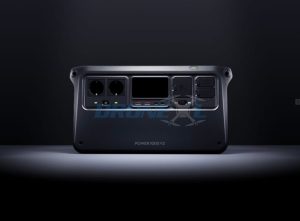



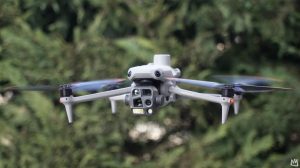

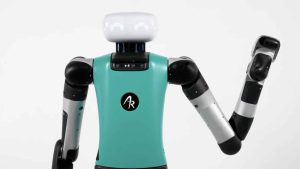
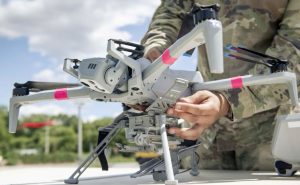






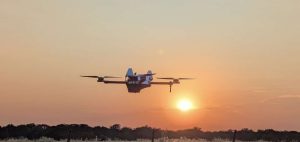
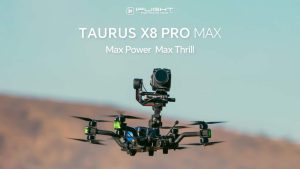

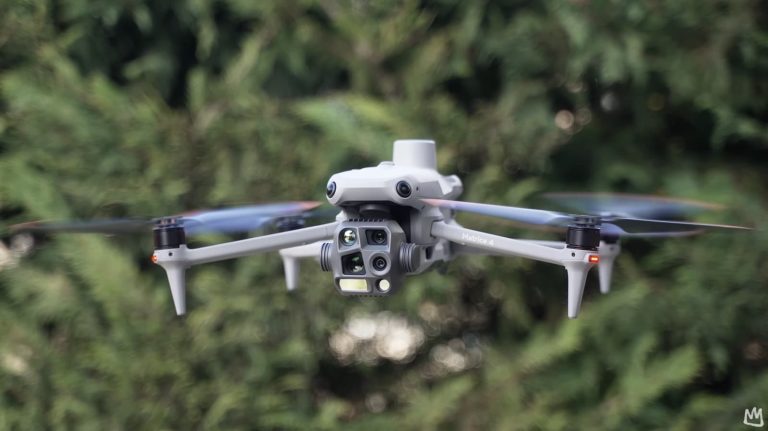

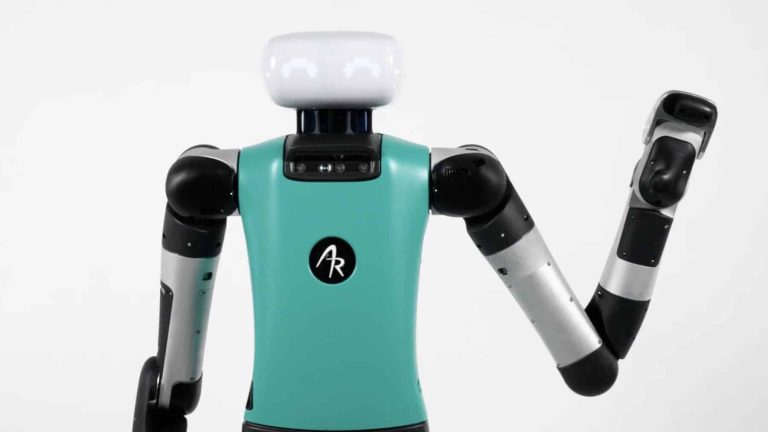

+ There are no comments
Add yours